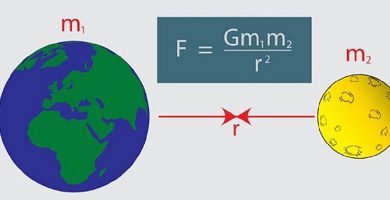What is a Text?
We explain what a text is and the meaning of this term. In addition, the types of text that exist and what their properties are.
-
What is a text?
Text is understood as an ordered composition of signs inscribed in a writing system , the reading of which makes it possible to recover a specific meaning referred to by the issuer. The word text comes from the Latin textus , which means “woven” or “interwoven”, so that at the very origin of the idea of the text is its ability to contain ideas in a thread or sequence of characters.
So a text becomes a number of sentences spun together and ordered based on an argument (explanatory, narrative, descriptive, etc.), using a specific system of signs, which we will call language , and within that system a specific code that we will call language .
Thus, every text contains a series of encrypted messages that the reader must be able to recover , and that can be of various kinds, according to the expressive tasks of the person who wrote it: the instructions for using a washing machine are texts, but also a love poem , the newspaper news or a protest graffiti on a wall in the street.
-
Types of texts

The texts are traditionally classified based on the communicative intention pursued by the issuer, and can therefore speak of:
- Informative texts . Those in which the reader is given a series of specific contents or information along with the conceptual or contextual tools to understand them, that is, something concrete is explained. For example: a technical report, an encyclopedia page.
- Narrative texts . Those in which a narrative is detailed , whether real or imaginary. For example: a story , a novel, a travel chronicle.
- Descriptive texts . Those in which an amount of detail is given regarding a specific object or event, aspiring to deplete its properties in some sense. For example: the record of a work of art in a museum, a propaganda for the sale of an appliance.
- Argumentative texts . Those who seek to convince the reader of any opinion, point of view or consideration, regarding any subject, offering arguments and reasons. For example: an opinion piece , a propaganda encouraging energy savings, a speech at a political rally.
- Commutative texts . Those who give precise instructions to the reader, and who are written using imperative verbs. For example: a recipe, a traffic sign, a no smoking sign.
- Poetic or playful texts . Those whose meaning is in the contemplation of beauty or ingenuity with which they were written, that is, appealing to the playful or aesthetic sense of the reader. For example: a poem, a literary work, a riddle.
-
Text properties

All text necessarily has the following properties:
- Cohesion . A cohesive text is one whose parts are logically linked to each other, that is, from the reading of one part you can go to the next in an orderly, rational way. The lack of cohesion makes the texts jump from one thing to another, without ton or are.
- Consistency . The texts must be consistent, which means focusing on a topic or topic on which they are going to refer, whatever it may be. A text should progress gradually towards the composition of a global, general idea, through the presentation of smaller or simpler ideas. But at the end of reading a coherent text, one can explain “what is it about.”
- Meaning . Every text has a meaning to be recovered by the reader, even in the most banal or inefficient. But writing is never meaningless, as it would have nothing to communicate and reading would be impossible.
- Progressivity . A text offers its content progressively, that is, little by little, one sentence at a time. That is why to know everything it says we must read everything, because as we move forward in reading we are deciphering more and more of the content of your message, and if we settle for the first part, we will not know everything.
- Intentionality . All text is written with some communicative intention, that is, with some purpose in mind, whether to serve as a reminder, to tell another person to do something, or simply to entertain. Anyway, this intention will configure the text and make the issuer use one or other resources in its composition.
- Appropriateness . All text must adapt to a series of codes and precepts that are common with your receiver, so that he can understand it and decipher its content. This happens through the way of using language , also by gender conventions, etc.





